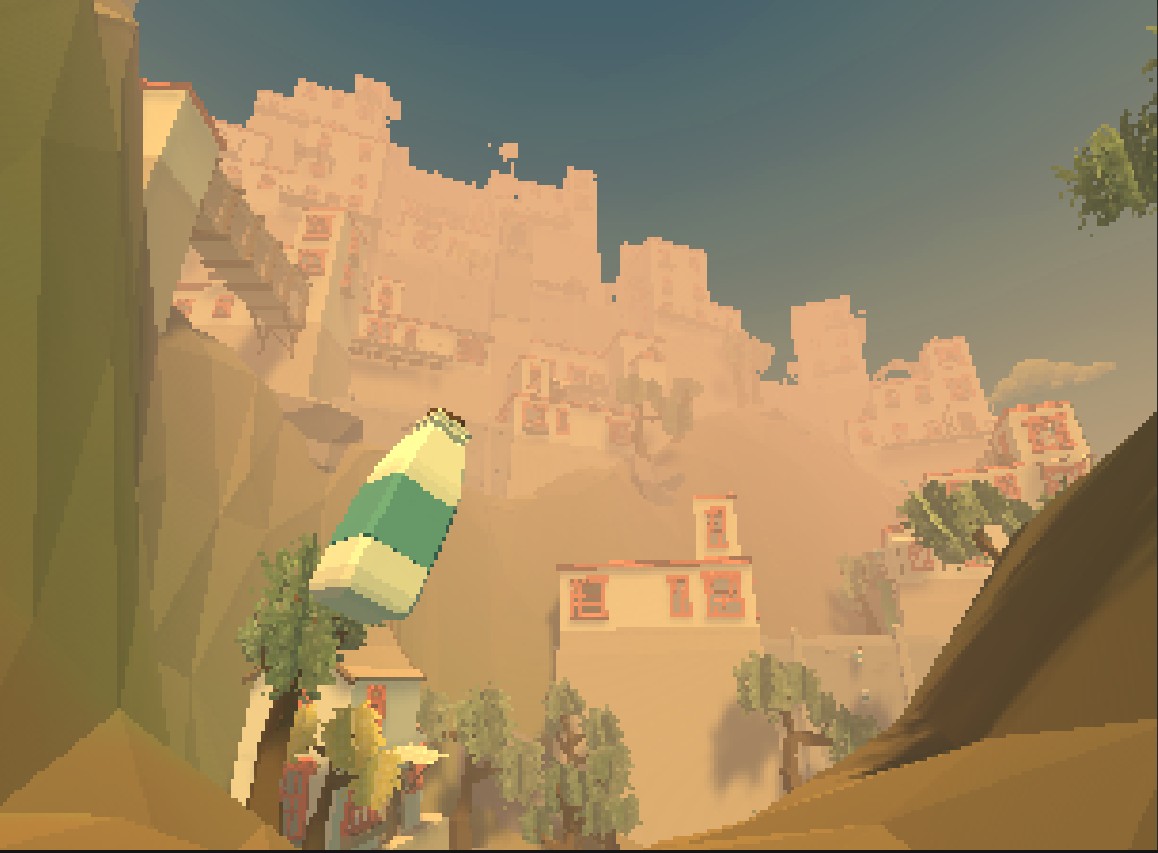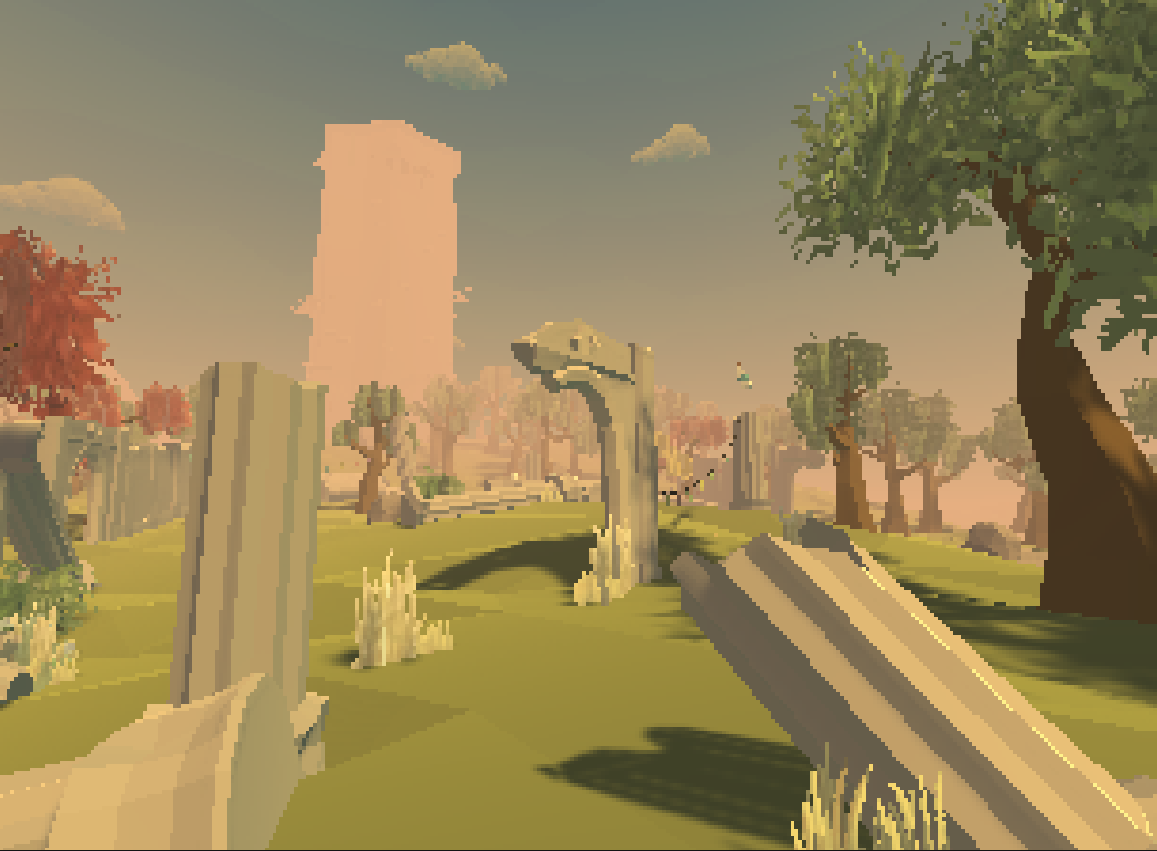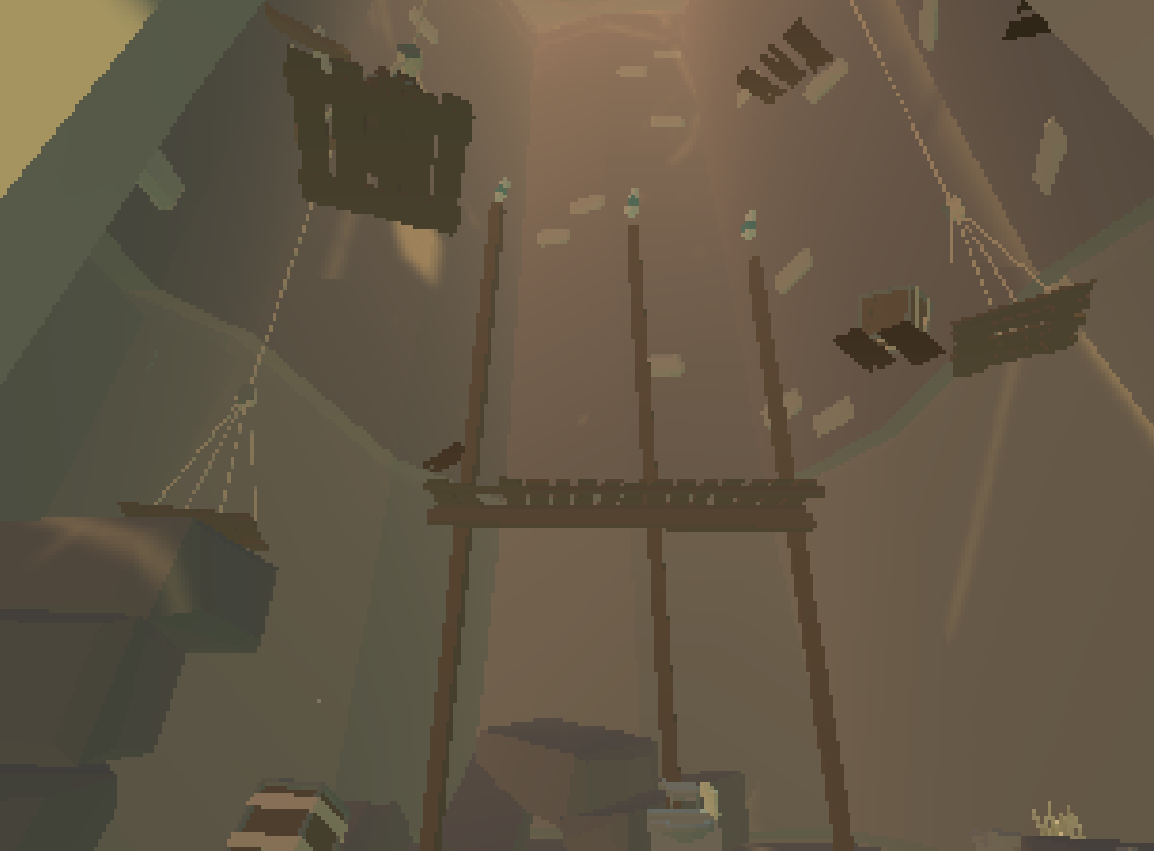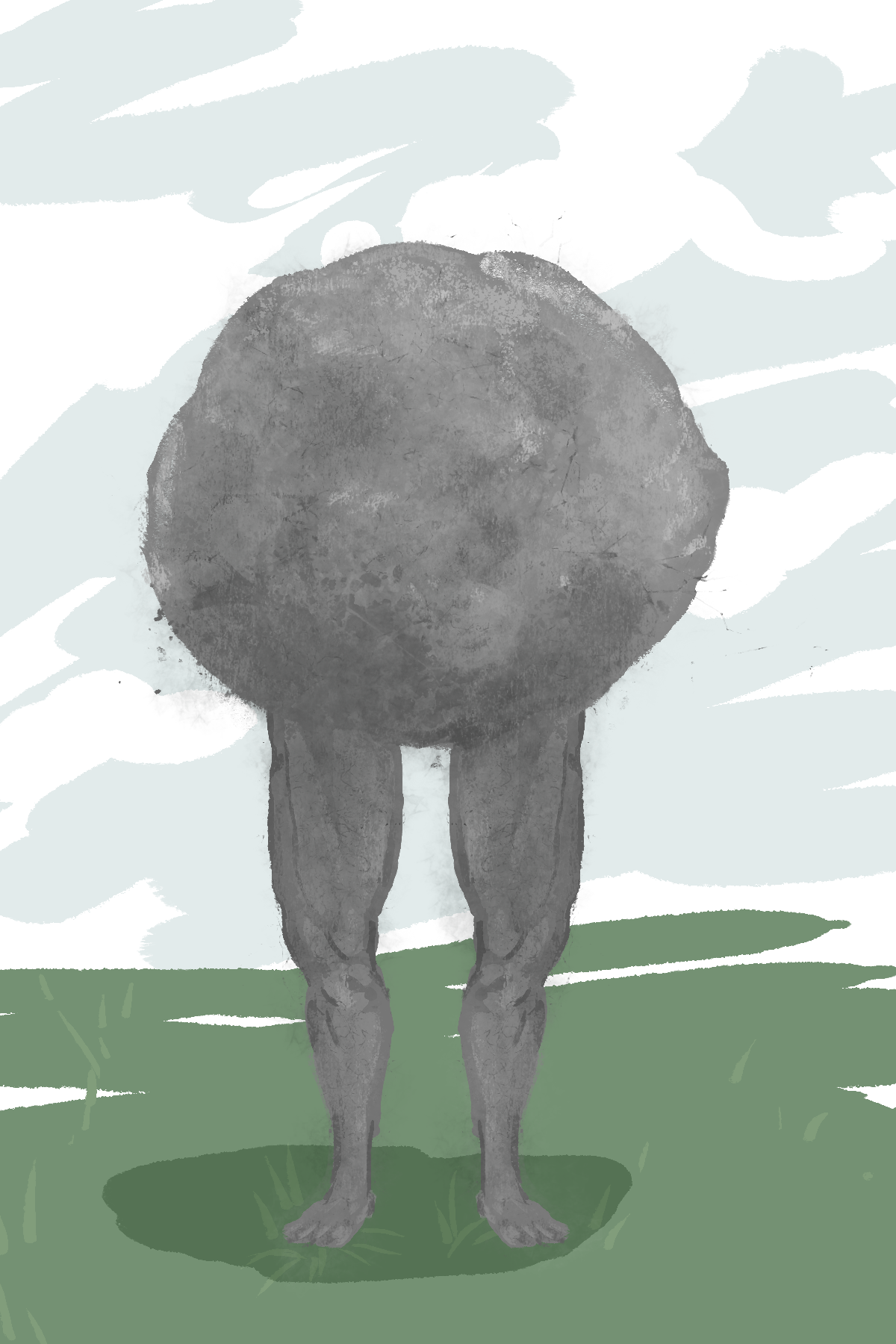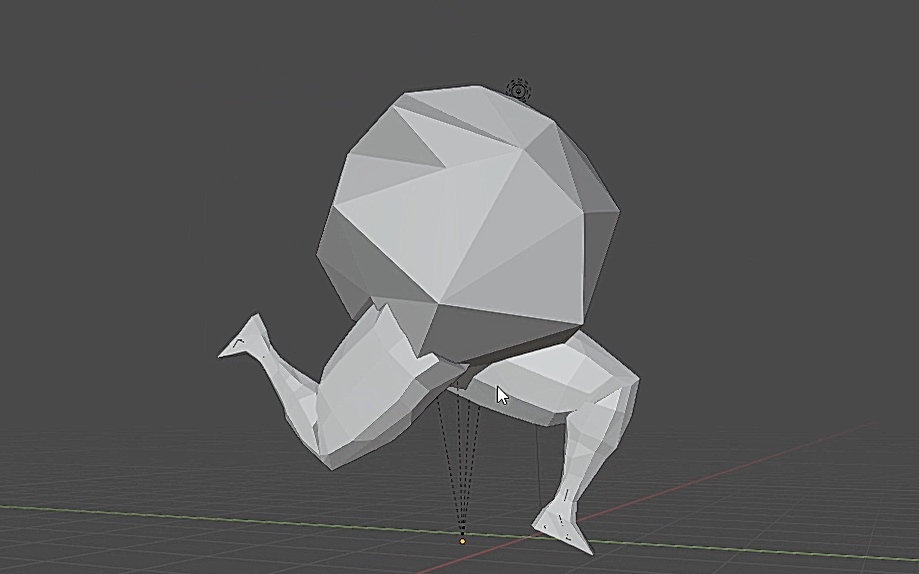Developing My First Video Game
Milk was developed during my final month of high school alongside Henry Schwabe and Jack Noble. Our school gave all seniors a month away from school to participate in a local internship or complete a personal project. I had been eager to get into game development for a long time at that point, and thought this would be the perfect opportunity to get started. Henry - a graphic designer - and Jack - a programmer with Unity experience - both agreed, and we began the project in May.
Milk was an entirely self organised project. There was no brief; our only limitations were imagination, ambition and technical skill. This was also in early 2021, so while the world had begun to open up a little, there were still lockdown restrictions that made collaborative projects difficult. However, we were enthusiastic and cautious, and so set up a hybrid working structure.
My main roles on this project were as a designer and artist, though I also implemented sound effects and created an original soundtrack. My first job as designer was to facilitate the ideation process. Prior to beginning the project, I created a document with methods for coming up with ideas and resources in our shared Google Drive. My teammates added additional resources. I also created a moodboard with many different references as we did not yet know what kind of game we were making.
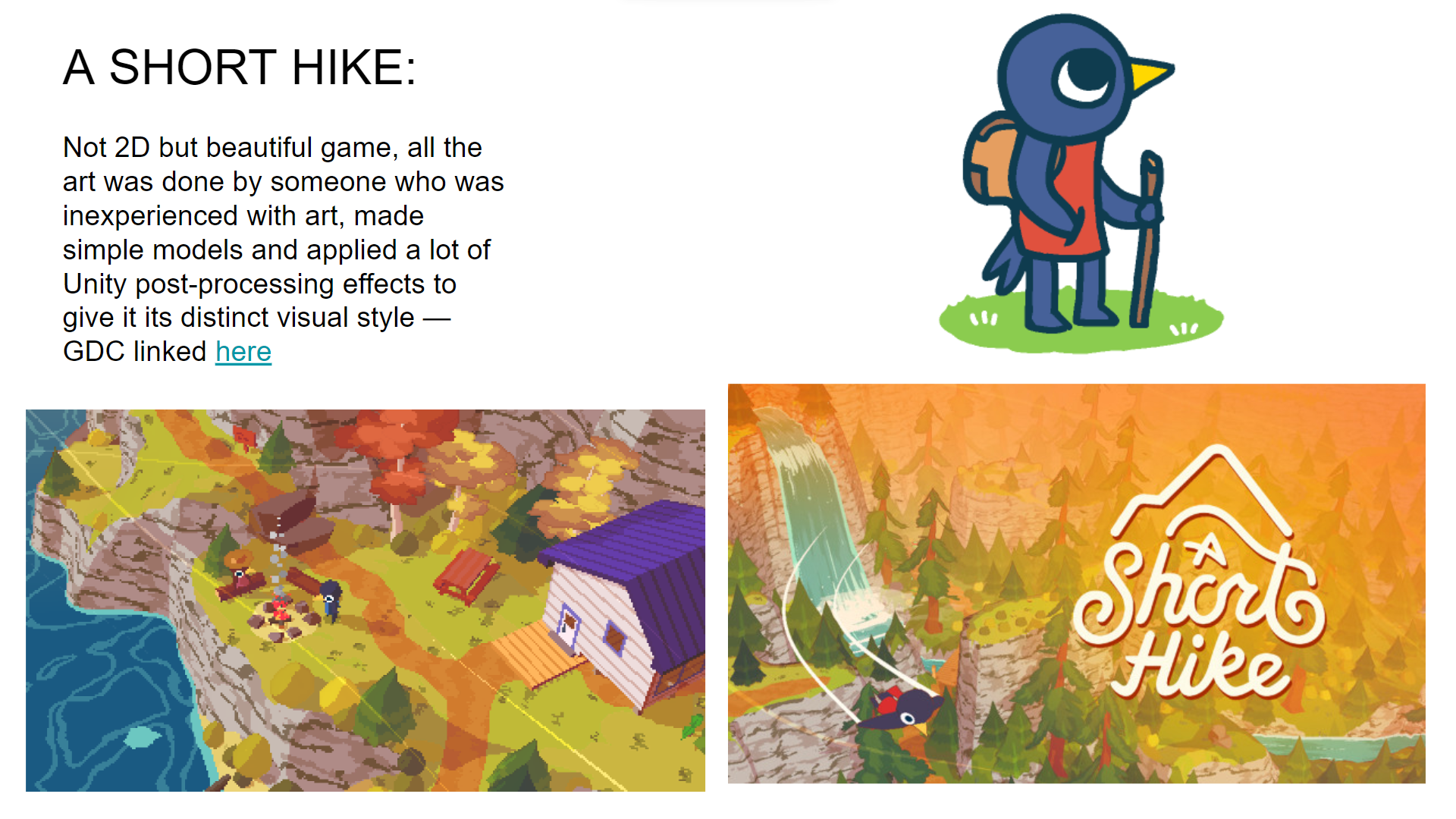
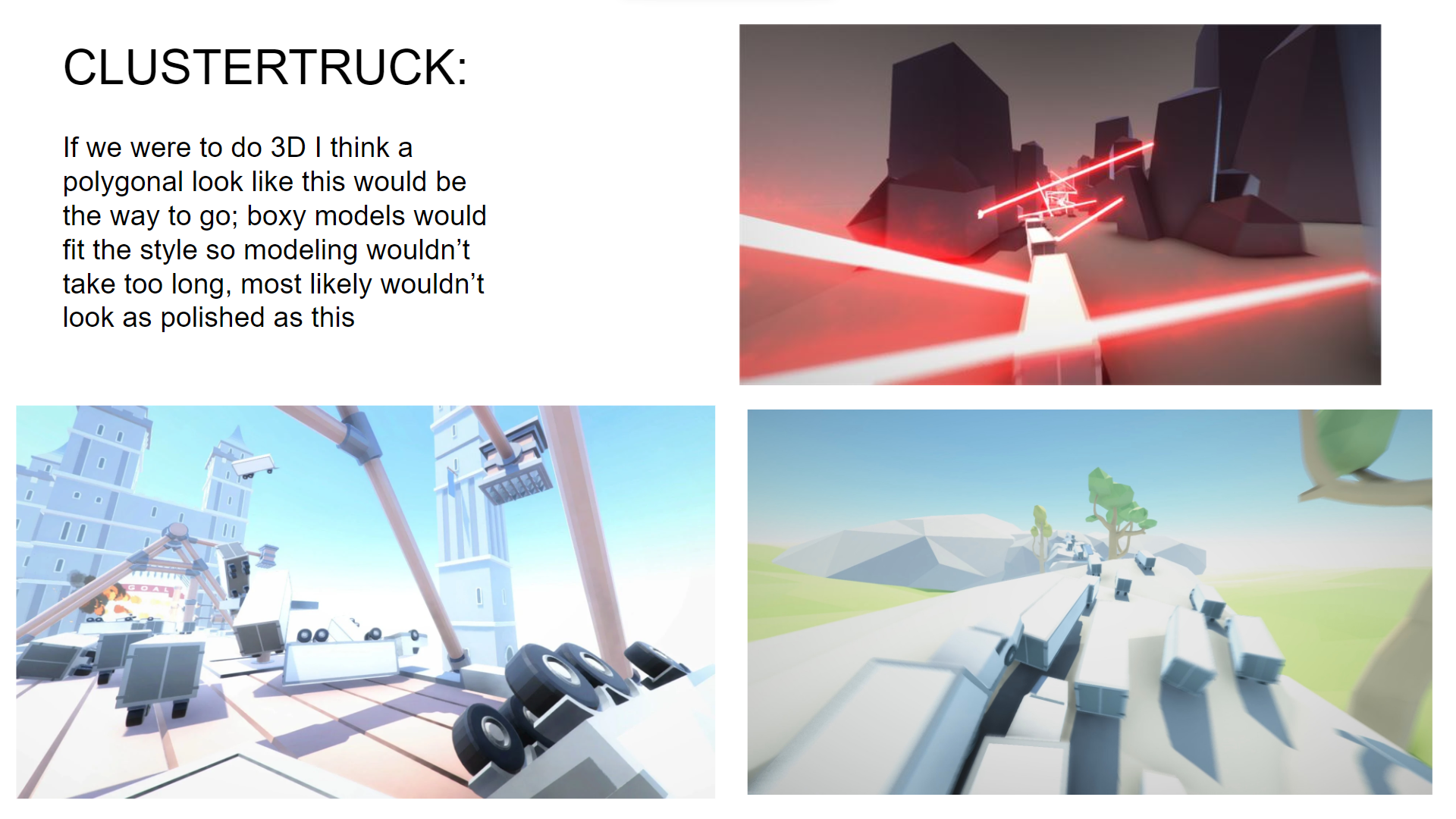
We didn't return to the moodboards until the project began in earnest in May, but we felt that a combination of the colourful pixelation of A Short Hike (2019) and the low poly modelling of Clustertruck (2016) would be appealing and achievable within the month we had. We discussed these along with the ideation methods in our Discord server and agreed to meet in person at our local library to have a brainstorming session.
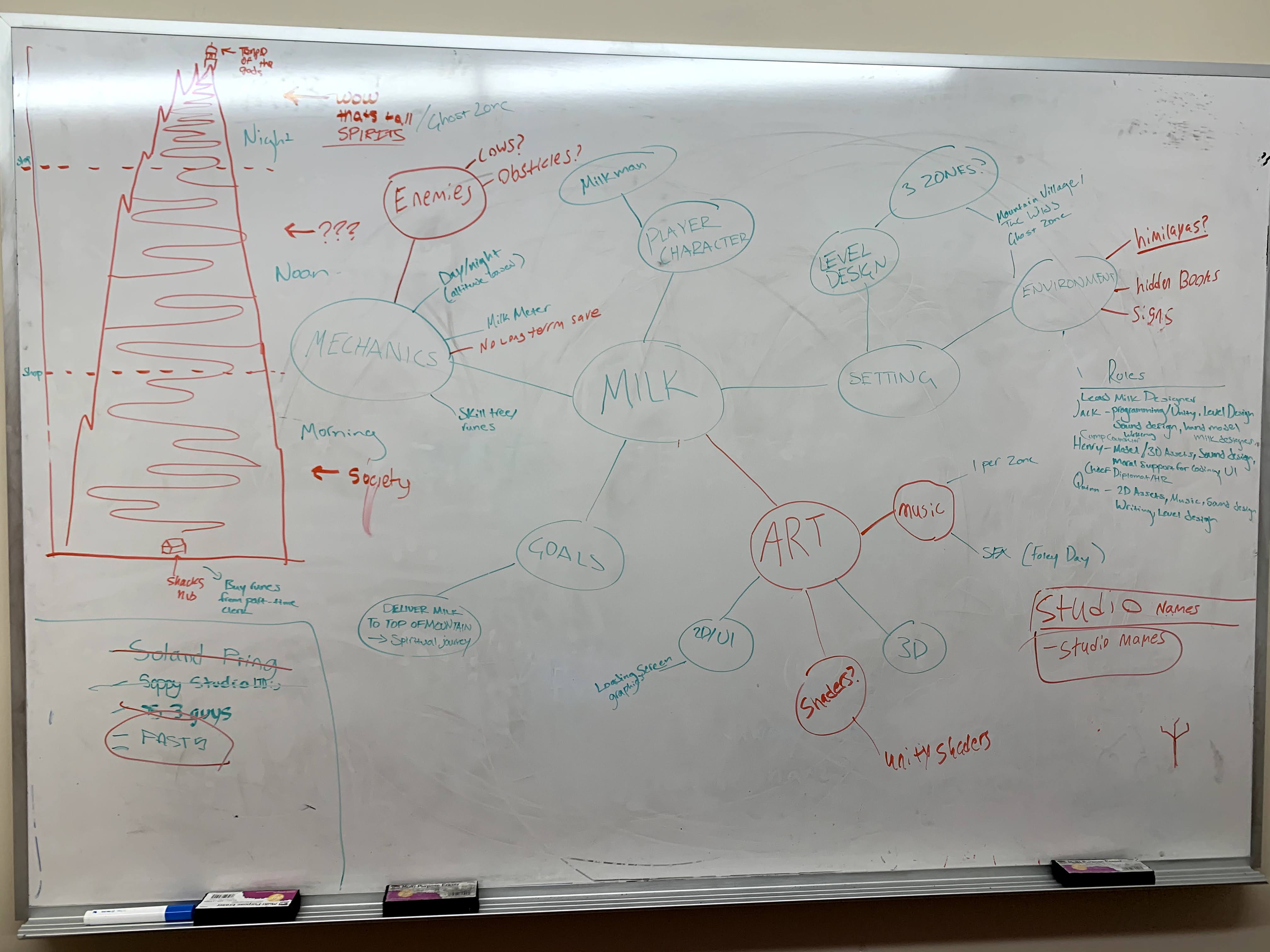
We created a mind map for the project we wanted to make, and after some deliberation decided on a mountain-hiking game where you play as a milkman making a pilgrimage up the sacred Milk Mountain. The mountain would be divided into zones based on elevation, each stranger than the last. We loosely divided ourselves into roles, but left a fair bit of overlap as we were all relatively new to Unity development.
After that meeting, remote development began. We worked asychronously using Unity's now defunct 'collaborate' source control. For this project, I started by creating the mountain terrain with Unity's terrain tools. This terrain was then exported to Blender and decimated to match the low poly style of the rest of the game. I would definitely take a different approach today, as the result was a very large mesh with far more vertices than necessary. Instead, I would opt to render the Unity terrain at a lower resolution.

I tried to keep scope in mind throughout the project, and at this point, as we were still familiarising ourselves with Unity, I suggested we reduce our goal to a vertical slice of the beginning sections of the game. This is why the terrain only covers the base of the mountain, which would allow us to build three of the areas we had brainstormed at the library.
From here, I jumped around to multiple different areas of the project, from concept art to modelling an enemy, to level design and audio. Because this wasn't a marked project, we had complete creative freedom, and experimented with surreal concepts that we thought would be interesting. For example, below are some of the notes and concept artwork for areas and features that didn't make it into the game.
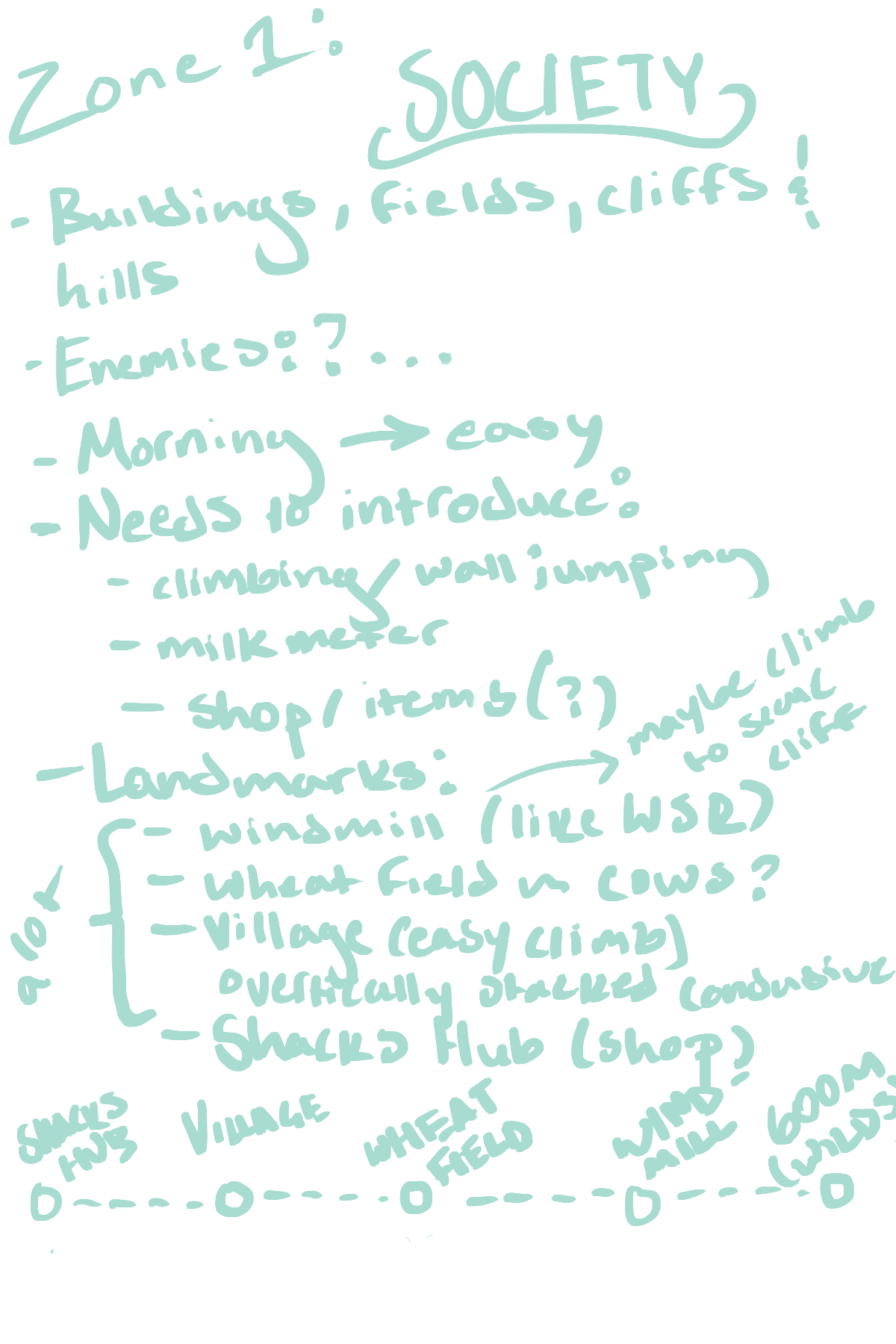
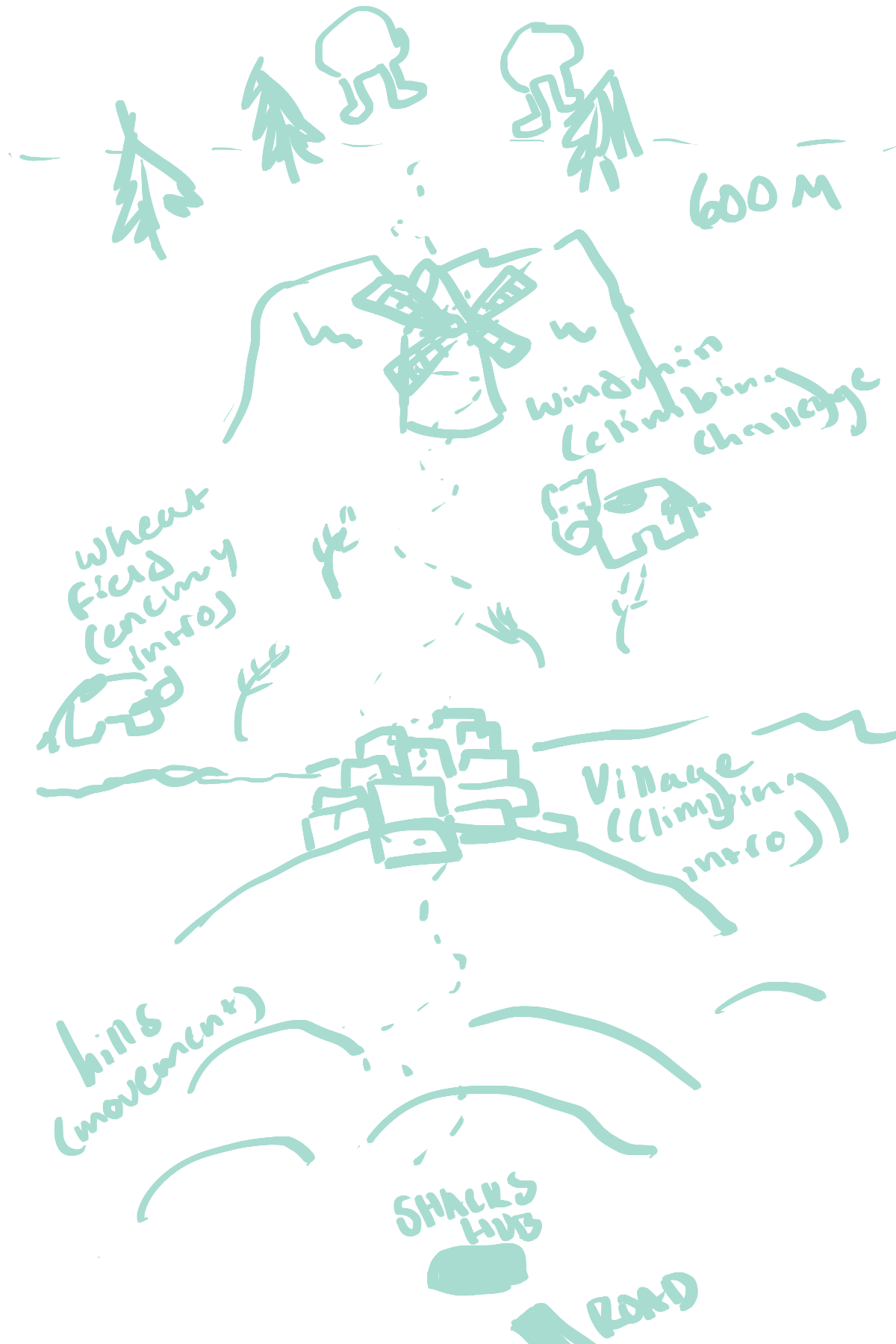
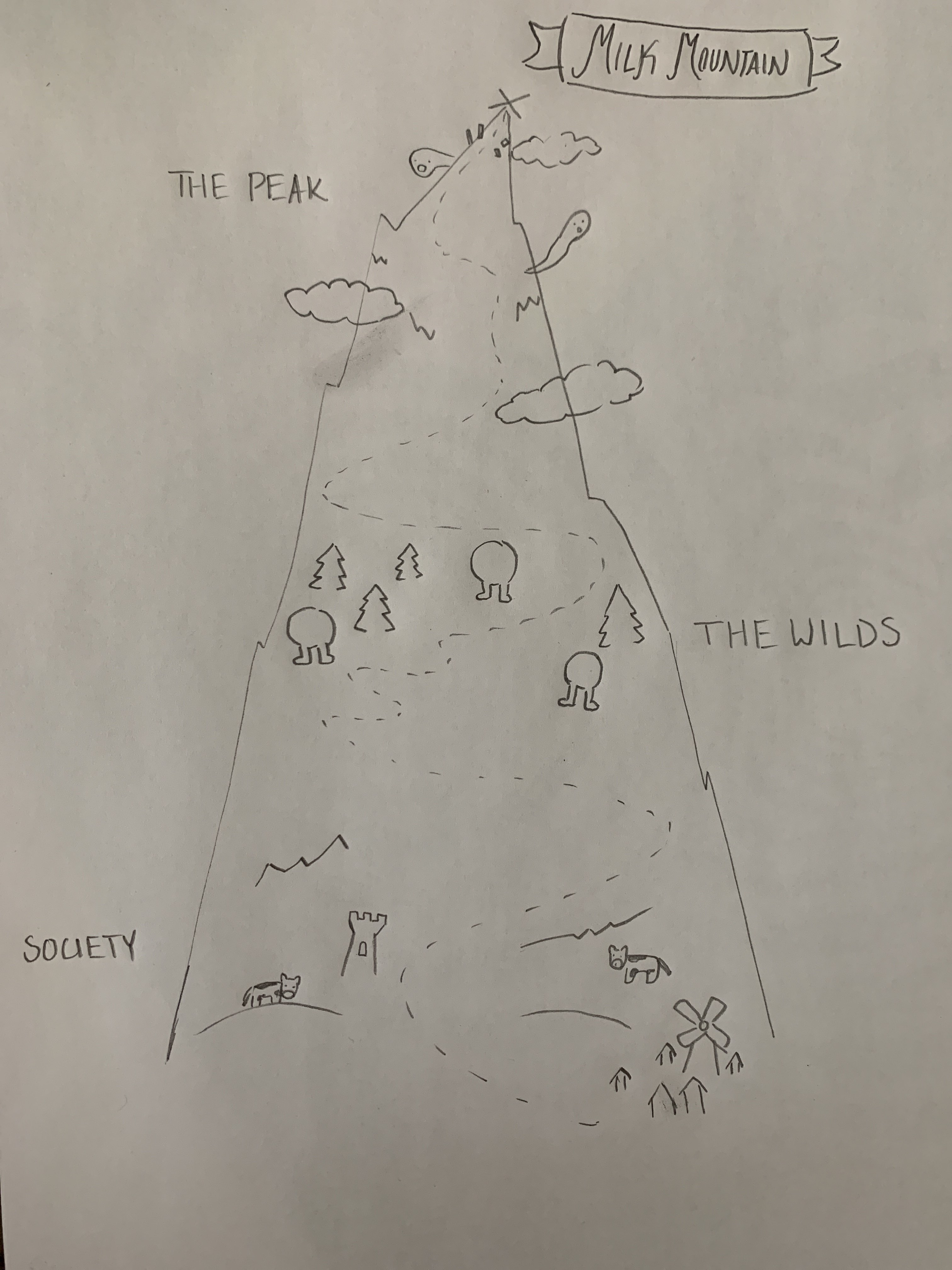

One feature we were unable to include in the final version of our project was enemies. Enemies in Milk were meant to be unsettling and funny. Each type would be an inanimate object with legs that ran at you and knocked you back to impede your progress. I suggested knockback as the enemies' attacking method as I felt a health system would be a poor fit for Milk's generally mellow gameplay. Two in particular we had specific encounters in mind.
One was that the well in the square at the top of the village would stand up. The player would have to jump on top of its roof to escape the square. The other, which we got much further along developing, was the Boulderman, a boulder that would spring from the ground when the player got close and chase them on foot. I created concept artwork for, modelled, and rigged this enemy, but we couldn't manage to get the pathfinding to work in our main scene. The Bouldermen would have been introduced in the ruins, and populated the Milk wilds later on.
Were I to return to this project, I would definitely focus on revamping the level design. When we were building Milk Mountain, myself and the other level designer didn't communicate much about level structure. As such, it can be somewhat difficult to navigate some sections. The sections I designed, the caves and ruins tower, feature more linear platforming challenges where the village and ruins are more free form. At the time, our solution was to pepper the map with collectible milk bottles. This isn't inherently bad, but it didn't get to the root of the problem.
I think there's room for both exploration and linear platforming challenges in Milk, but a more considered approach to both would be helpful for clarity. Exploration suits open horizontal areas like the ruins as the way forward is always clear. However, the village area, which is mostly vertical and dense, can be confusing at times.
Overall, I am proud of what the team was able to make in such a short time and with relatively little experience. Milk marked the beginning of my game development journey and contains traces of ideas I've continued to explore in my later work, such as surrealism and atmospheric environments.

